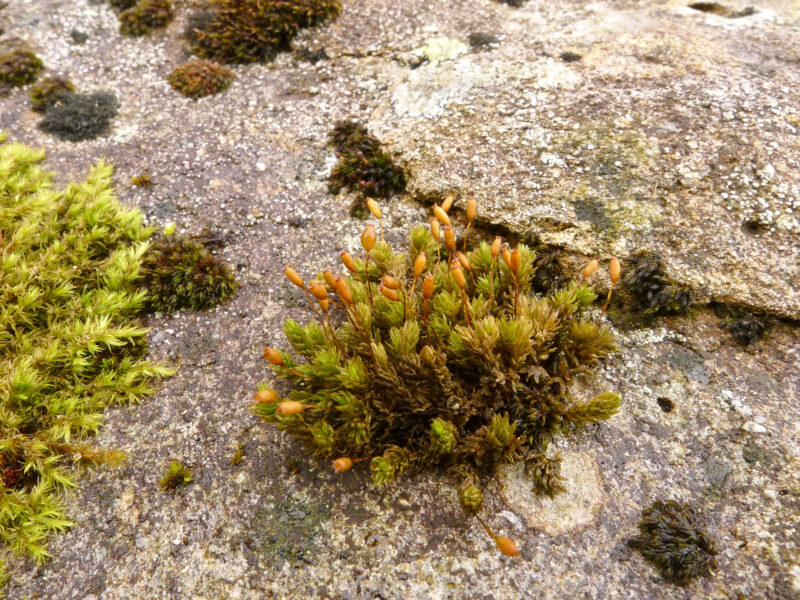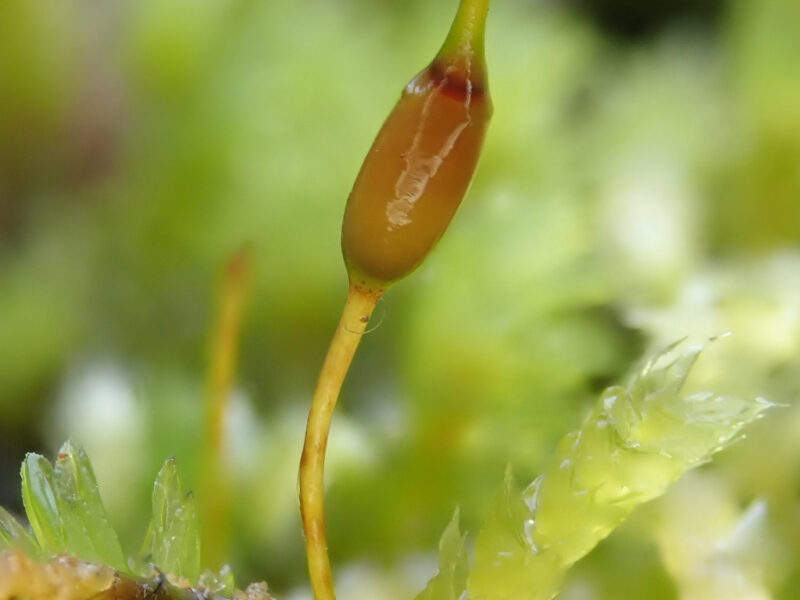Identification notes
This is a very common member of the riparian community of swift-flowing rocky rivers and streams, but only where the rocks are at least moderately acidic. Its dark green, straggly tufts and preferred situation on boulder tops just above the normal level of the water makes it usually easy to identify, more so when female plants produce capsules, which are held well above the plants on a long seta.
In the field, examine the leaves with a hand-lens and you should see the broad, rounded tip with a few rather obscure marginal teeth, its best identification features. Make sure you examine a number of leaves if teeth are not immediately visible – not every leaf has them. Like other riparian bryophytes however, its growth form is often quite variable and sometimes it appears to have slightly falcate leaves.
R. aciculare is most often to be found growing with a number of other common riparian mosses including Sciuro-hypnum plumosum, Hygrohypnella ochracea, Dichodontium pellucidum/flavescens, Brachythecium rivulare and Schistidium rivulare. Sometimes, however, especially in small, very rocky hill streams that dry up occasionally, it may be the only bryophyte present and when dry it makes the rocks look black.
Read the Field Guide account


















